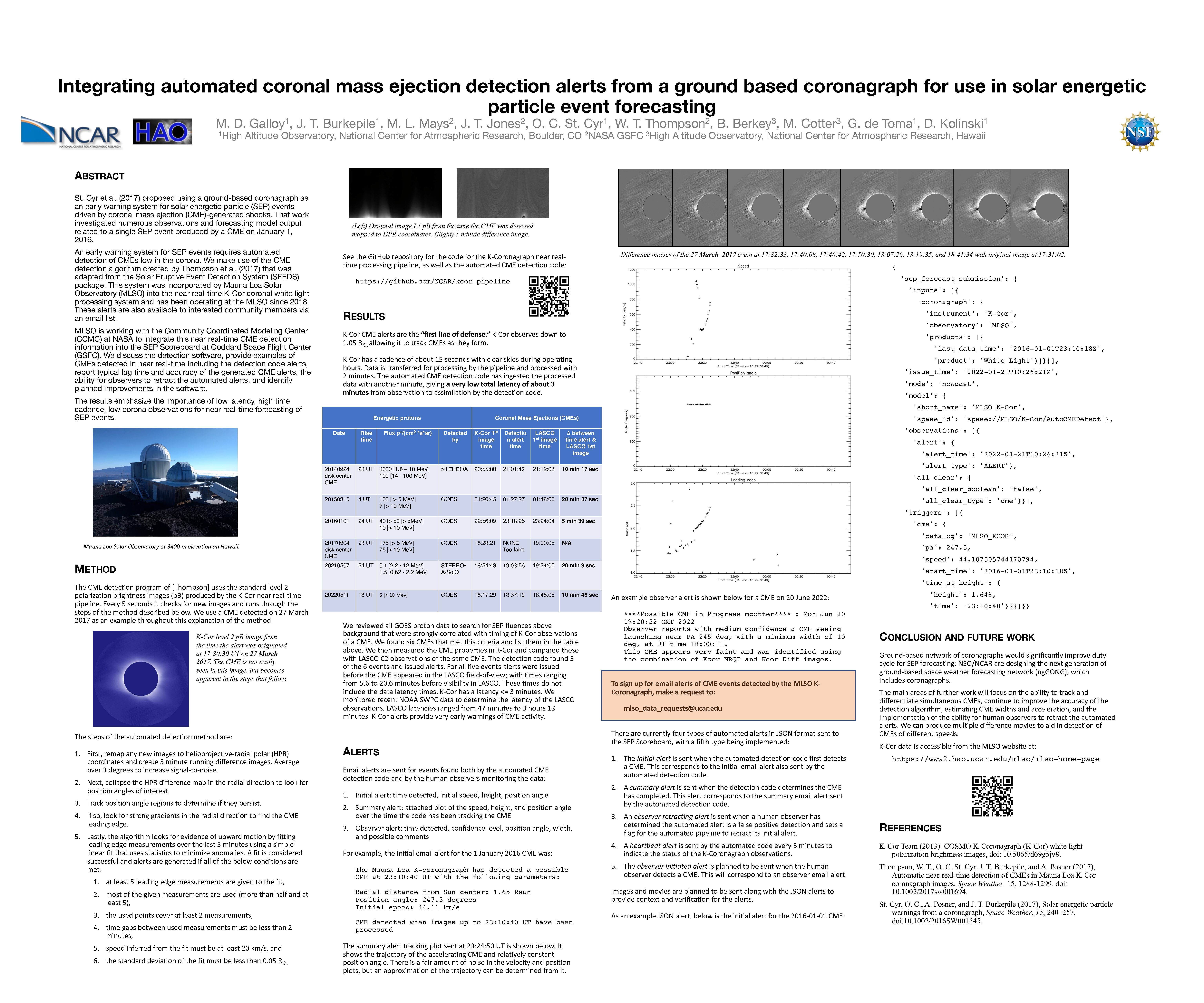Authors: M. D. Galloy (HAO Boulder, CO), J. T. Burkepile (HAO Boulder, CO), M. L. Mays (NASA GSFC), J. T. Jones (NASA GSFC), O. C. St. Cyr (NASA GSFC), W. T. Thompson (NASA GFSC), B. Berkey (HAO Hawaii), M. Cotter (HAO Hawaii), G. de Toma (HAO Boulder, CO), D. Kolinski (HAO Boulder, CO)
St. Cyr et al. (2017) proposed using a ground-based coronagraph as an early warning system for solar energetic particle (SEP) events driven by coronal mass ejection (CME)-generated shocks. That work investigated numerous observations and forecasting model output related to a single SEP event produced by a CME on January 1, 2016.
An early warning system for SEP events requires automated detection of CMEs low in the corona. We make use of the CME detection algorithm created by Thompson et al. (2017) that was adapted from the Solar Eruptive Event Detection System (SEEDS) package. This system was incorporated by Mauna Loa Solar Observatory (MLSO) into the near real-time K-Cor coronal white light processing system and has been operating at the MLSO since 2018. These alerts are also available to interested community members via an email list.
MLSO is working with the Community Coordinated Modeling Center (CCMC) at NASA to integrate this near real-time CME detection information into the SEP Scoreboard at Goddard Space Flight Center (GSFC). We discuss the detection software, provide examples of CMEs detected in near real-time including the detection code alerts, report typical lag time and accuracy of the generated CME alerts, the ability for observers to retract the automated alerts, and identify planned improvements in the software.
The results emphasize the importance of low latency, high time cadence, low corona observations for near real-time forecasting of SEP events.


